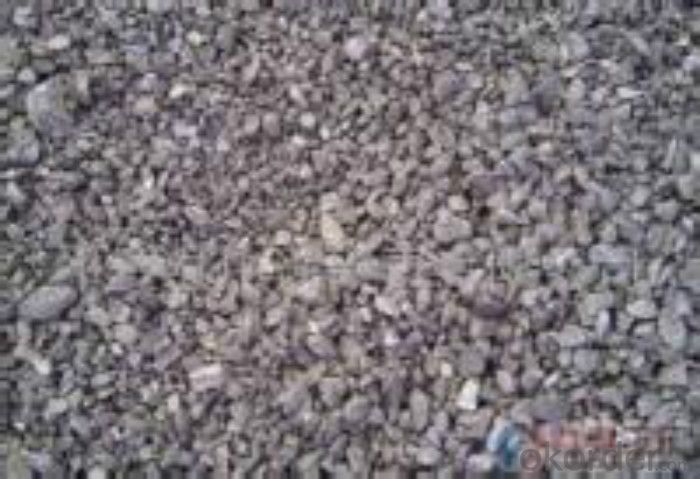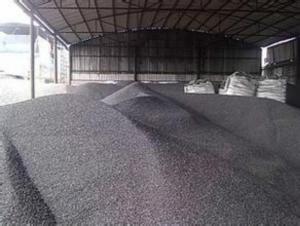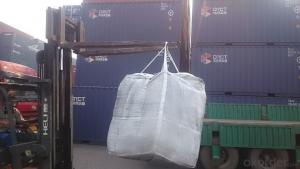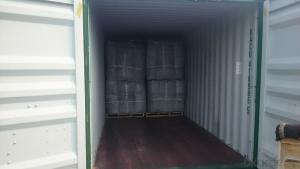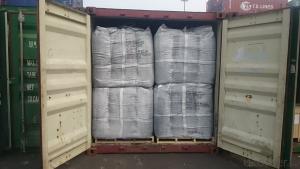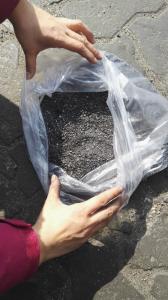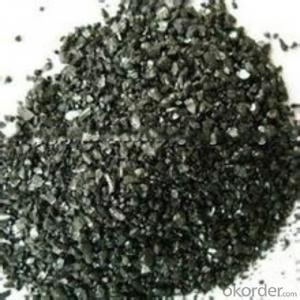GPC with lower Sulphur0.05% max in Low VM
- Loading Port:
- Tianjin
- Payment Terms:
- TT OR LC
- Min Order Qty:
- 22 m.t.
- Supply Capability:
- 5002 m.t./month
OKorder Service Pledge
OKorder Financial Service
You Might Also Like
Introduction:
GPC has good characteristics with low ash, low resistivity, low sulphur, high carbon and high density. It is the best material for high quality carbon products. It is used as carbon additive in steel industry or fuel.
Features:
1.Our strong team provide you reliable service that make you feel purchasing is more easier
2. We ensure that we can supply capability with competitive price.
3. Work strictly to guarantee product quality, it is playing more and more important role in the industry.
Specifications:
F.C.% | 95MIN | 94MIN | 93MIN | 92MIN | 90MIN | 85MIN | 84MIN |
ASH % | 4MAX | 5MAX | 6 MAX | 6.5MAX | 8.5MAX | 12MAX | 13MAX |
V.M.% | 1 MAX | 1MAX | 1.0MAX | 1.5MAX | 1.5MAX | 3 MAX | 3 MAX |
SULFUR % | 0.3MAX | 0.3MAX | 0.3MAX | 0.35MAX | 0.35MAX | 0.5MAX | 0.5MAX |
MOISTURE % | 0.5MAX | 0.5MAX | 0.5MAX | 0.5MAX | 0.5MAX | 1MAX | 1MAX |
Pictures
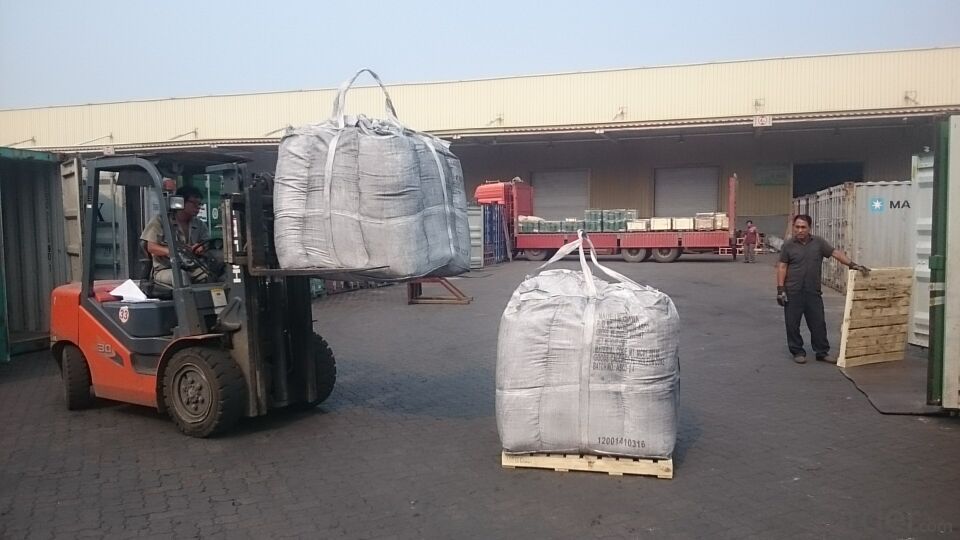
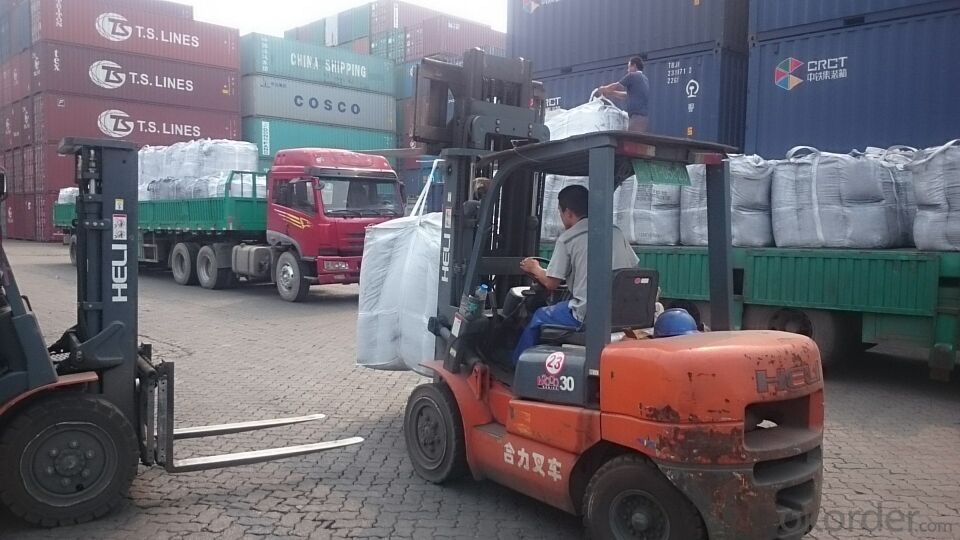
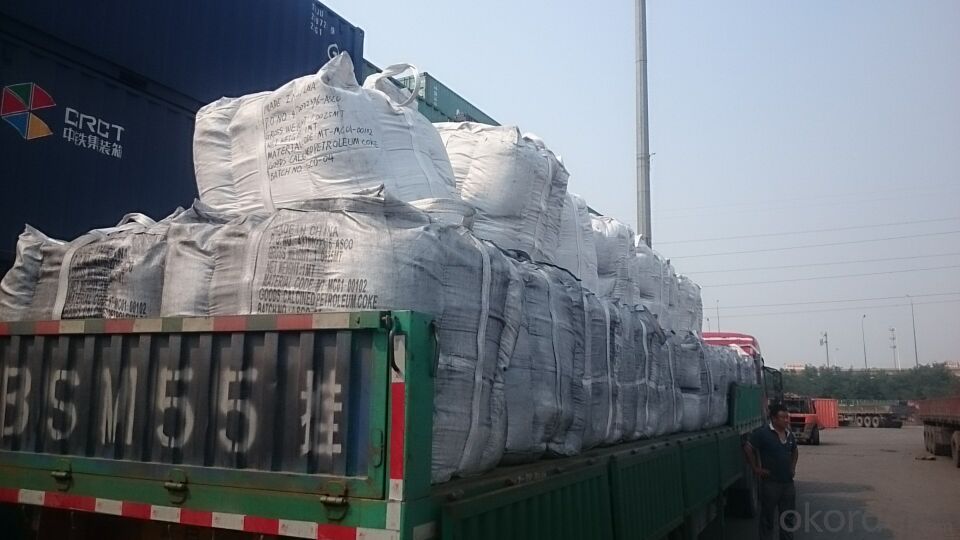
FAQ:
1. Your specification is not very suitable for us.
Please offer us specific indicators by TM or email. We will give you feedback as soon as possible.
2. When can I get the price?
We usually quote within 24 hours after getting your detailed requirements, like size, quantity etc. .
If it is an urgent order, you can call us directly.
3. Do you provide samples?
Yes, samples are available for you to check our quality.
Samples delivery time will be about 3-10 days.
4. What about the lead time for mass product?
The lead time is based on the quantity, about 7-15 days. For graphite product, apply Dual-use items license need about 15-20 working days.
5. What is your terms of delivery?
We accept FOB, CFR, CIF, EXW, etc. You can choose the most convenient way for you. Besides that,
we can also shipping by Air and Express.
6. Product packaging?
We are packed in bulk ship or in ton bag or placing in container or according to your requirements.
- Q: What is the greenhouse effect of carbon dioxide?
- The greenhouse effect of carbon dioxide refers to the process by which carbon dioxide and other greenhouse gases trap heat in the Earth's atmosphere, leading to a gradual increase in global temperatures.
- Q: What are the effects of carbon emissions on the stability of mangrove forests?
- Carbon emissions have significant effects on the stability of mangrove forests. Mangrove forests are highly vulnerable to changes in climate, and increased carbon emissions contribute to global warming and climate change, which directly impact these ecosystems. One of the main effects of carbon emissions on mangrove forests is rising sea levels. As carbon dioxide is released into the atmosphere, it traps heat and contributes to the warming of the planet. This leads to the melting of polar ice caps and glaciers, causing sea levels to rise. The increased sea levels pose a threat to mangroves as they are adapted to grow in intertidal zones, where they are exposed to both saltwater and freshwater. With rising sea levels, mangroves may experience increased inundation, which can lead to their submergence and eventual death. Furthermore, carbon emissions also contribute to ocean acidification. As carbon dioxide dissolves in seawater, it forms carbonic acid, which alters the pH balance of the ocean. Mangroves rely on the ocean for their nutrient supply and reproductive processes. Ocean acidification can impede the availability of essential nutrients, such as nitrogen and phosphorus, which are vital for the growth and survival of mangroves. Additionally, the acidification of seawater can negatively affect the reproduction and development of mangrove species, leading to a decline in their population. Carbon emissions also contribute to changes in weather patterns, such as increased frequency and intensity of storms and hurricanes. Mangroves act as a natural barrier, protecting coastal areas from the destructive impacts of these extreme weather events. However, with intensified storms and hurricanes, the stability of mangrove forests is compromised. Strong winds, heavy rainfall, and storm surges can uproot or damage mangrove trees, disrupting their structure and reducing their ability to provide coastal protection. Lastly, carbon emissions contribute to the overall warming of the planet, which can lead to changes in precipitation patterns. Mangroves rely on a delicate balance of freshwater and saltwater for their survival. Alterations in precipitation patterns, such as prolonged droughts or increased rainfall, can disrupt this balance and negatively impact mangroves. Droughts can lead to water scarcity, causing mangroves to become stressed and more susceptible to diseases and pests. On the other hand, increased rainfall can lead to excessive amounts of freshwater, diluting the salinity of mangrove habitats and affecting their growth and reproduction. In conclusion, carbon emissions have detrimental effects on the stability of mangrove forests. Rising sea levels, ocean acidification, changes in weather patterns, and alterations in precipitation patterns all contribute to the degradation and loss of mangrove ecosystems. It is crucial to reduce carbon emissions and mitigate the effects of climate change to ensure the long-term survival and stability of mangrove forests.
- Q: What are the impacts of carbon emissions on human respiratory diseases?
- Human respiratory diseases are significantly affected by carbon emissions, especially those resulting from the burning of fossil fuels. The release of carbon dioxide and other greenhouse gases into the atmosphere contributes to climate change, which in turn impacts air quality and worsens respiratory conditions. One of the main outcomes of carbon emissions is the rise in air pollution. When fossil fuels are burned, various pollutants such as nitrogen oxides, sulfur dioxide, and particulate matter are released. These pollutants can irritate and harm the respiratory system, triggering and worsening respiratory diseases like asthma, bronchitis, and chronic obstructive pulmonary disease (COPD). They can also lead to the development of respiratory infections and reduce lung function, making individuals more susceptible to respiratory illnesses. Respiratory health is further affected by climate change, which is fueled by carbon emissions. As temperatures rise and weather patterns change, allergens and air pollutants proliferate, causing more frequent and severe allergic reactions and exacerbating respiratory conditions. Climate change can also extend the pollen season and increase the production of mold spores, leading to asthma attacks and other respiratory symptoms. Additionally, carbon emissions contribute to the creation of ground-level ozone, a harmful pollutant. Climate change enhances the chemical reactions that produce ozone due to higher temperatures and increased sunlight. Ground-level ozone can irritate the airways, resulting in coughing, shortness of breath, and chest pain. It can also worsen existing respiratory diseases and impair lung function, particularly in vulnerable populations such as children, the elderly, and individuals with pre-existing respiratory conditions. In conclusion, the impact of carbon emissions on human respiratory diseases is significant. They contribute to air pollution, which worsens respiratory conditions and increases the risk of respiratory infections. Furthermore, climate change, driven by carbon emissions, intensifies the production of allergens and air pollutants, exacerbating respiratory symptoms and reducing lung function. It is crucial to implement effective measures to reduce carbon emissions not only to address climate change but also to protect respiratory health.
- Q: What are the impacts of carbon emissions on marine life?
- Marine life is significantly affected by carbon emissions, particularly the release of carbon dioxide (CO2) from burning fossil fuels. The primary consequence is ocean acidification, which occurs when seawater absorbs excess CO2, leading to a decrease in pH levels. This acidification has harmful effects on marine organisms, especially those with calcium carbonate shells or skeletons like corals, mollusks, and some plankton. As pH levels decrease, it becomes more challenging for these organisms to construct and maintain their shells. This can result in slower growth rates, weaker shells, and increased susceptibility to predation and disease. Furthermore, the dissolution of calcium carbonate shells due to ocean acidification can disrupt the entire food chain, as many organisms rely on these shells for protection or as a food source. In addition, carbon emissions contribute to global warming, resulting in rising sea temperatures. Warmer waters can cause coral bleaching, where corals expel the colorful algae living within their tissues, ultimately leading to the loss of their primary food source and eventual death. Coral reefs are crucial ecosystems that support a diverse range of marine life, and their decline has extensive consequences for biodiversity and coastal communities dependent on them for tourism and fisheries. The impacts of carbon emissions on marine life extend beyond individual species and ecosystems. Climate change, driven by carbon emissions, can disrupt ocean currents, alter weather patterns, and affect nutrient availability. These changes can influence the distribution and abundance of marine organisms, leading to shifts in species composition and potential loss of biodiversity. It is important to note that the impacts of carbon emissions on marine life are interconnected with other stressors such as overfishing, pollution, and habitat destruction. These combined pressures worsen the vulnerability of marine ecosystems and increase the risk of irreversible damage. To mitigate the impacts of carbon emissions on marine life, it is crucial to reduce greenhouse gas emissions. This can be achieved by transitioning to cleaner and renewable energy sources, improving energy efficiency, and adopting sustainable practices. Additionally, protecting and restoring marine habitats, implementing sustainable fishing practices, and reducing pollution can enhance the resilience of marine ecosystems and promote the recovery of marine life.
- Q: Are carbon cells the same as alkaline batteries?
- Unlike, alkaline batteries are 4-5 times the capacity of carbon batteries, and the price is 1.5-2 times that of carbon.Carbon battery full name: neutral zinc manganese dioxide dry cell (zinc-manganese dry battery), belonging to the chemical source of the original battery, is a one-time battery. Because the chemical power unit has an electrolyte that is a non flowing paste, it is also called a dry cell, as opposed to a battery with a flowing electrolyte.
- Q: Joint carbide gas incident
- The Central Bureau of investigation in India after the disaster had 12 official allegations, including the Union Carbide (India) Co., Ltd. India 8 executives when he was chairman of Warren Anderson and company, two small companies and the company itself and under the. The 1 indicted India executives have been killed, the court 7 days to negligence causing death sentence the remaining 7 India nationals guilty, including the then Indian president Keshub Mahindra is more than 70 years old, many people. According to the charges, they will be sentenced to two years in prison at most. Survivors of the gas leak and their families and local activists gathered in front of the court 7 days ago, holding banners protesting the punishment of the perpetrators too light and late. Since the conviction was made in a local court in India, the defendant had the right to appeal to a higher court, and it was estimated that the process would continue for several years. After the disaster, Anderson, the American boss of the company, returned home soon. Now he lives in New York. In July last year, the court issued an arrest warrant for Anderson, but it has not been mentioned below.
- Q: What are the effects of carbon emissions on the stability of wetlands?
- The stability of wetlands is significantly impacted by carbon emissions. One of the main consequences is the disruption of the hydrological cycle, which can disturb the delicate balance of water levels in wetland ecosystems. The increased release of carbon emissions contributes to climate change and global warming, resulting in higher temperatures and changed patterns of precipitation. These alterations can lead to more frequent and severe droughts, floods, and storms, negatively affecting the stability of wetlands. Moreover, elevated levels of carbon dioxide also influence the vegetation in wetlands. Excess carbon dioxide can stimulate the growth of specific plant species, causing an imbalance in the wetland ecosystem. This imbalance can lead to the dominance of invasive species, which outcompete native plants and disrupt the natural biodiversity of the wetland. Consequently, the stability of the wetland is impacted as it relies on a diverse range of plant species to support the intricate web of life within it. Additionally, carbon emissions contribute to the acidification of water bodies, including wetlands. Increased carbon dioxide dissolves in water, forming carbonic acid, which lowers the pH of the water. Acidic conditions can be harmful to the survival of many wetland species, including plants, amphibians, fish, and invertebrates. The acidification of water can also result in the release of toxic metals and other pollutants from surrounding soils, further compromising the stability and health of wetland ecosystems. Lastly, carbon emissions contribute to the rise of sea levels due to the melting of polar ice caps and expansion of ocean waters. This poses a significant threat to coastal wetlands, which are particularly vulnerable to sea-level rise. As sea levels increase, there is a risk of saltwater intrusion, leading to the degradation and loss of freshwater wetlands. This loss can cause the displacement or extinction of numerous plant and animal species that depend on these ecosystems, ultimately destabilizing the wetland. In conclusion, the stability of wetlands is profoundly impacted by carbon emissions. From the disruption of the hydrological cycle and alteration of vegetation composition to the acidification of water and sea-level rise, these emissions pose a significant threat to the health and integrity of wetland ecosystems. It is essential to reduce carbon emissions and implement measures to protect and restore wetlands to ensure their stability and preserve the invaluable services they provide.
- Q: How does carbon affect the migration patterns of birds?
- Bird migration patterns are significantly affected by carbon emissions and resulting climate change. The rise in atmospheric carbon dioxide levels leads to global warming, which affects various environmental factors like temperature, precipitation, and vegetation growth. These changes directly impact the availability of food, water, and suitable habitats for birds during their migratory journeys. One way carbon affects bird migration is by changing the timing and duration of seasonal events. For example, warmer temperatures can cause plants to bloom earlier or delay their growth, disrupting the synchronized timing of flowering and insect arrival. This can have serious consequences for birds that rely on these resources for food during migration. If birds arrive at breeding grounds or stopover sites and find a lack of food, it can result in decreased survival rates, reduced reproductive success, and overall population decline. In addition, changes in precipitation patterns due to carbon emissions can affect the availability of water sources along migration routes. Birds depend on these water bodies for drinking and bathing, especially during long flights. If these water sources dry up or become scarce, birds may need to change their flight paths, search for alternative water sources, or risk dehydration. Furthermore, carbon-induced changes in vegetation cover can impact the availability of suitable habitats for birds. As temperatures rise, some bird species may struggle to find appropriate breeding or nesting sites. Forest-dwelling birds, for instance, may face habitat loss as forests degrade or transition to drier ecosystems. This disruption can affect migratory patterns and potentially lead to declines in population or shifts in range. Overall, the impact of carbon emissions on bird migration patterns is complex and multifaceted. As climate change unfolds, it is crucial to reduce carbon emissions and implement conservation measures to ensure the survival and well-being of migratory bird populations. Protecting important stopover sites, promoting habitat restoration, and raising awareness about the consequences of carbon emissions can all contribute to preserving the intricate and vital phenomenon of bird migration.
- Q: I saw a cell phone in the magazine, the global release of 900, no camera, what function is F1 carbon fiber material, actually sold 40000 yuan a piece!.. Everyone said that the circulation is so small, worth so much money? Or carbon fiber material worth so much money?
- See where, in a car for example transformation kit, with super run even if the civil area shape roughly the same but the price difference, if you feel that things are expensive, natural carbon prices go up, in fact carbon species layout production process characteristics of professional strength lot, do not understand
- Q: What is carbon nanophotonics?
- The study and manipulation of light at the nanoscale using carbon-based materials is known as carbon nanophotonics. This branch of science and technology integrates carbon nanotubes, graphene, and diamond nanoparticles with photonics to develop new optical devices and systems. Carbon-based nanomaterials possess exceptional electrical conductivity, high mechanical strength, and excellent optical properties, making them ideal for nanophotonics applications. These materials can confine and manipulate light at the nanoscale, enabling the miniaturization of optical components and enhancing light-matter interactions. Carbon nanophotonics has vast potential across various fields. Telecommunications, for instance, can benefit from high-speed and compact photonic devices developed using carbon nanomaterials for efficient data transmission. In the field of sensing, highly sensitive and selective sensors can be developed using carbon nanophotonics to detect different molecules and substances. Furthermore, carbon nanomaterials can enhance the efficiency of solar cells and other photovoltaic devices, contributing to advancements in energy harvesting. In summary, carbon nanophotonics is a rapidly evolving field that combines carbon-based nanomaterials with photonics to create innovative optical technologies. By harnessing the power of light at the nanoscale, this field has the potential to revolutionize industries and drive advancements in science and technology.
Send your message to us
GPC with lower Sulphur0.05% max in Low VM
- Loading Port:
- Tianjin
- Payment Terms:
- TT OR LC
- Min Order Qty:
- 22 m.t.
- Supply Capability:
- 5002 m.t./month
OKorder Service Pledge
OKorder Financial Service
Similar products
Hot products
Hot Searches


